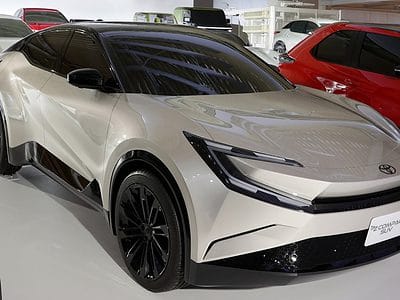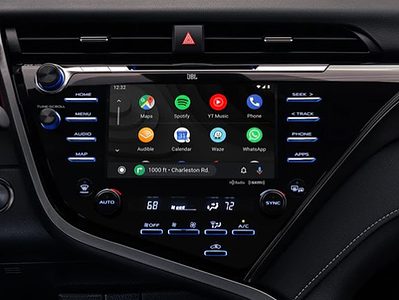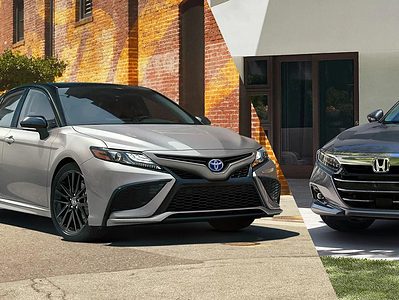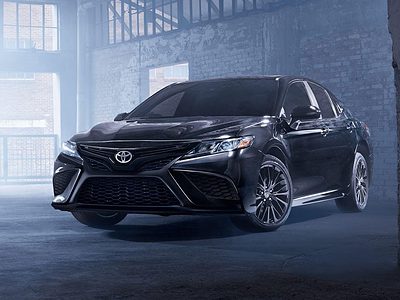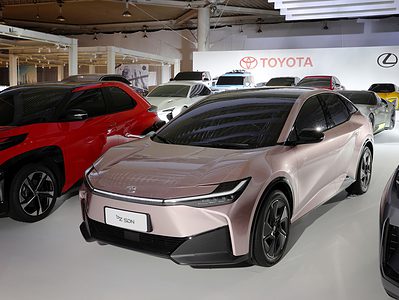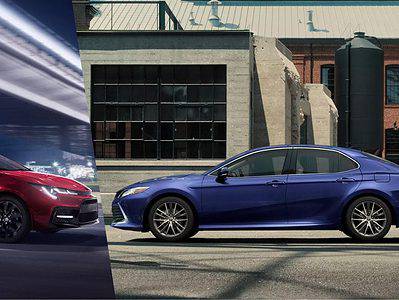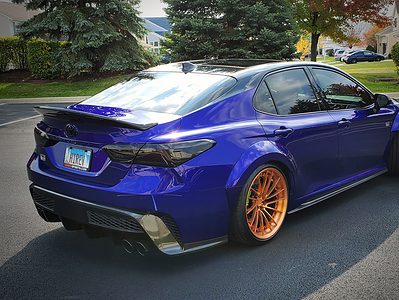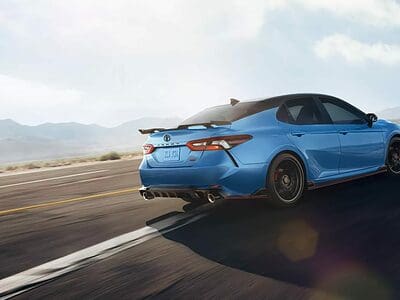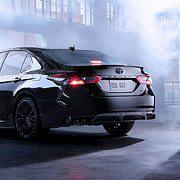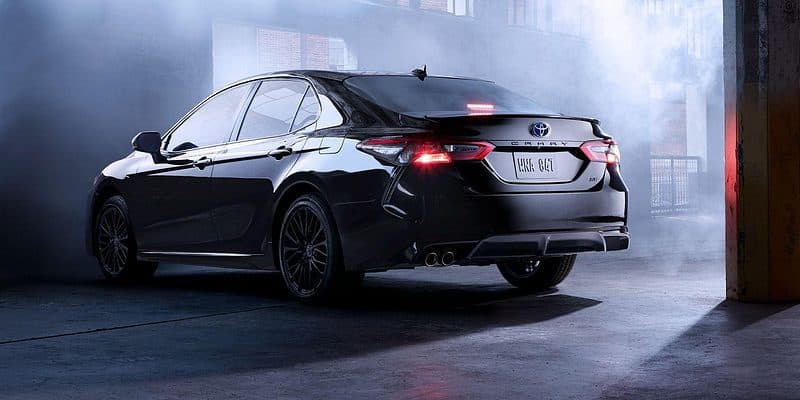
The Toyota Camry has been the best-selling midsize sedan in the U.S. for a long time. It has been one of the safest vehicles, getting awarded multiple NHTSA 5-star ratings and IIHS Top Safety Picks. But the Camry has also gone through many changes over the years. This blog post will look at the different Toyota Camry generations from 1983 to date and how the car has evolved through those years.
Toyota Camry First Generation (V10): 1983–1986
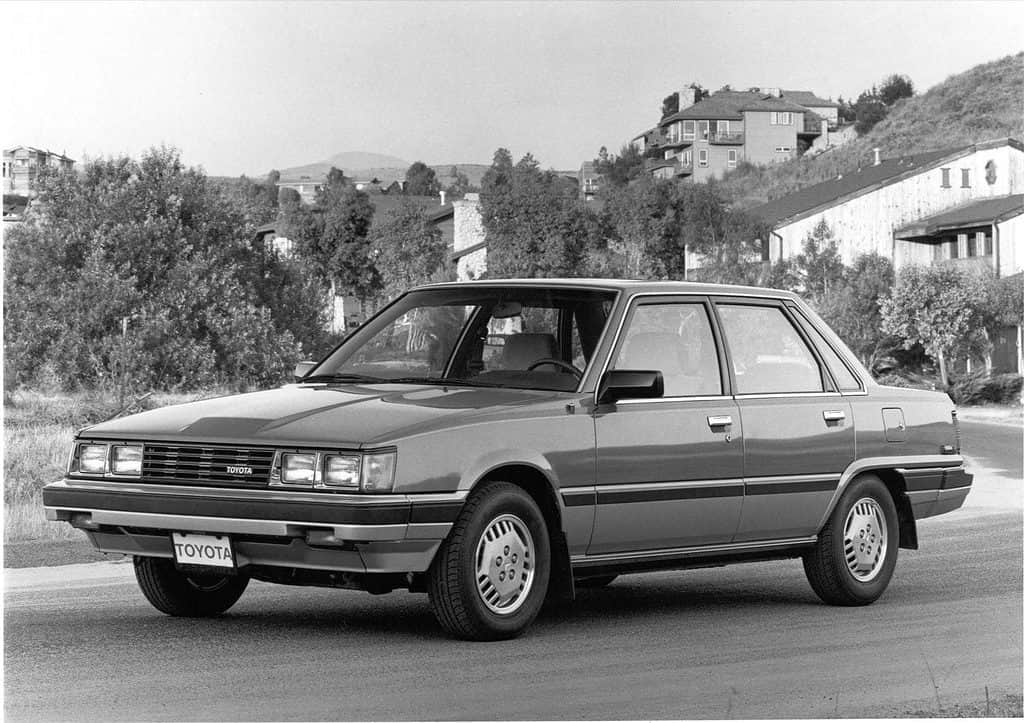
The Toyota Camry was originally designed as a small FWD four-door sedan to replace the RWD Corona. It went head-to-head with rivals such as the Ford Tempo, Chevrolet Citation, Chrysler K-cars, and the Honda Accord, which would become the Camry’s greatest competitor.
With the history lesson out of the way, what features did this generation possess?
The first-generation Toyota Camry measured 175.6 inches — 16.5 inches shorter than today’s models — and was available in sedan and liftback body styles. It used a 2-liter (121.7 cubic inches) inline-four engine, producing 92 horsepower and 112.9 lb.-ft — mated to a five-speed manual gearbox. This FWD car could reach a top speed of 108.2MPH and accelerate from 0 to 100 kilometers per hour in 12 seconds. Toyota added a turbo-diesel later in the model’s run.
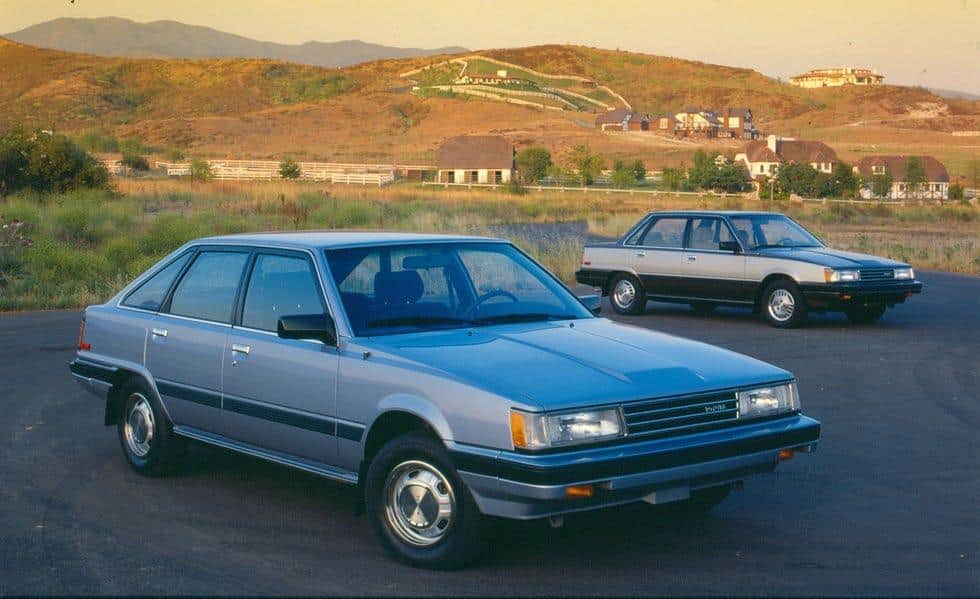
More spacious than the Corona, comfortable, and reliable, the Camry quickly gained traction in the U.S. market, winning over buyers.
Toyota Camry Second Generation (V20): 1987–1991
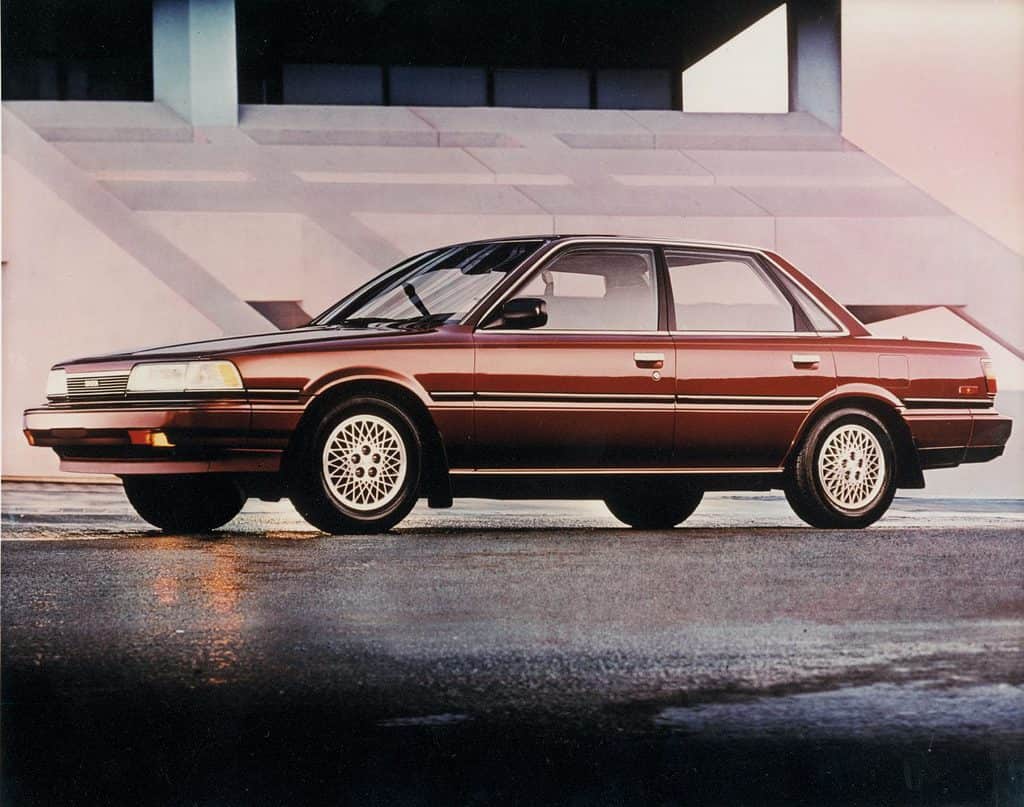
The second Toyota Camry generation hit the market in 1987, just four years after the first model. The new vehicle had greater interior volume and a wider variety of models. Although its wheelbase was identical to the previous Camry, it was longer, broader, and had a larger trunk. It also had a more streamlined overall look for better aerodynamics, but it retained the boxy style of the preceding generation.
The standard 16-valve four-cylinder base engine produced 121 hp. But the company soon introduced new four-cylinder models making 128 hp with an all-wheel-drive option called All-Trac. Also, buyers had the option of a 2.5-liter V6 engine (generating 160 horsepower) that could be paired with either a manual or automatic transmission for the first time.
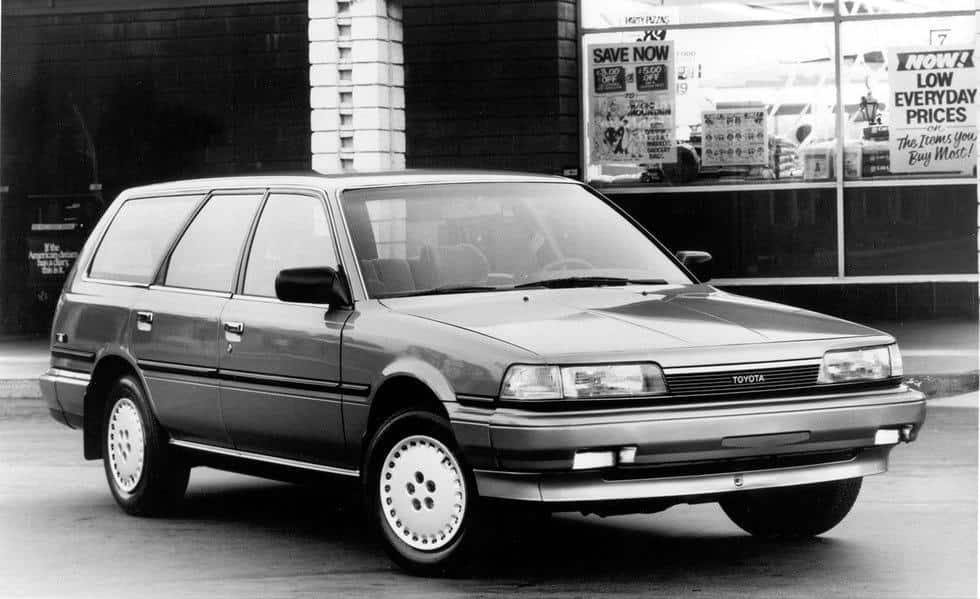
Aside from a new V6 engine, the second generation marks the Camry’s first real foray into the U.S. market. In 1988, Toyota established a new plant in Georgetown, Kentucky, to cater to the North American market. As a result, sales increased further that year, reaching a peak of 200,000 units in the United States for the first time.
Toyota Camry Third Generation (XV10): 1992–1996
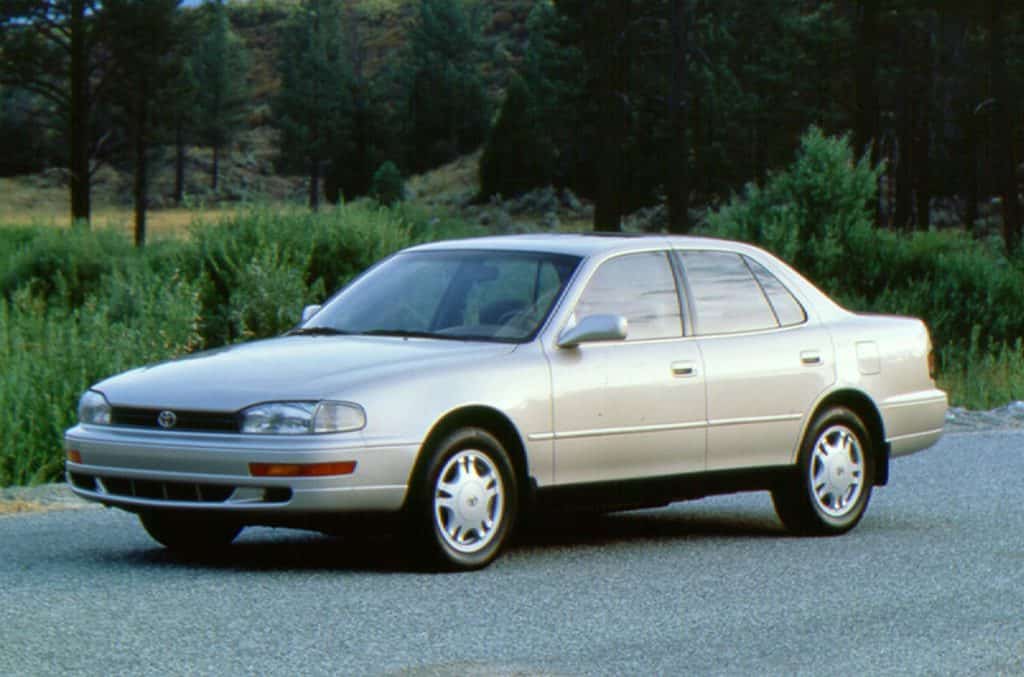
The third-generation Toyota Camry debuted in 1992 with a new wide-body configuration that took it from the compact category to the mid-size class. It was the first time the American Camry was differentiated from global market versions.
The XV20 series represented a significant redesign. The new model was slightly longer and wider, allowing for more interior room compared to previous generations. It also had curved body contours, giving it a more stylish appearance. It even sounded stylish, with better insulation to reduce road noise.
The third Toyota Camry generation introduced a four-speed automatic transmission and a four-wheel-drive system. The base engine was boosted to a more powerful 2.2-liter four-cylinder, with an optional 3-liter V6. Car and Driver was so impressed it named the new Camry in its 1992 and 1993 10Best Cars lists.
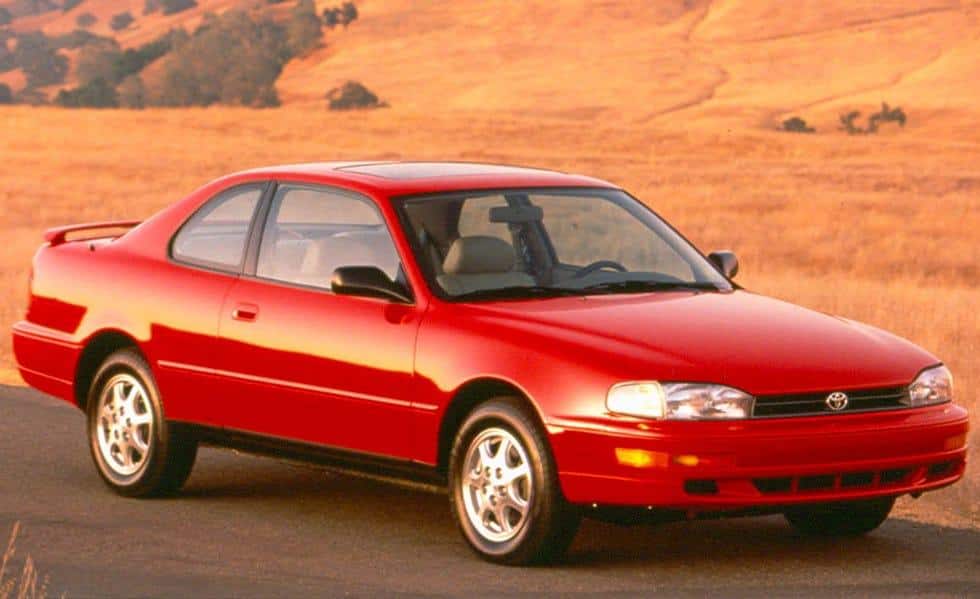
In 1994, Toyota released a two-door Camry coupe with the same dimensions as the sedan, just 0.2 inches shorter in height. It used the same four-cylinder and V6 engines as the sedan, with the latter being intended as a more sporty alternative —especially in the racier SE.
Toyota Camry Fourth Generation (XV20): 1997–2001
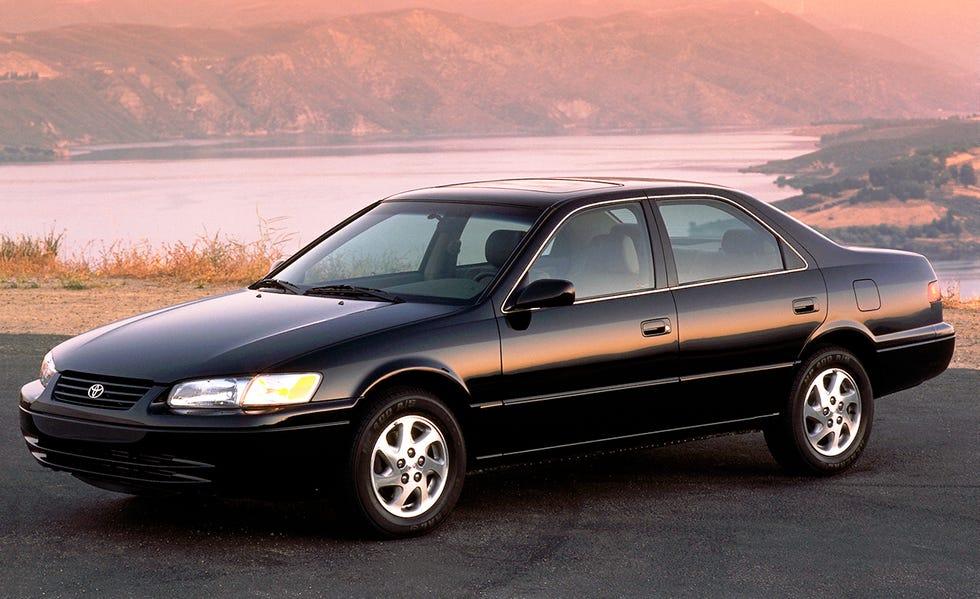
The fourth Toyota Camry generation was more U.S.-centric than ever. The company’s Ann Arbor, Michigan facility contributed half of the vehicle’s development, with the other half spearheaded by Toyota, Japan.
This Camry generation was longer and wider than its predecessors, but it managed to lose some weight and trim a few hundred dollars off its launch price. It retained the two engines — the 2.2-liter inline-four and the 3-liter V6 — although peak power increased to 133 and 194 horsepower, respectively. In 1997,
Like its predecessor, this generation is an award winner, with Car and Driver naming the 1997 Camry V6 in its 10 best cars list. Perhaps more spectacular, the model year became the best-selling car in the United States for the very first time — an accolade it would hold on to for many years to come.

The fourth generation marked a couple of changes for the lineup. Toyota dropped the wagon variant from the American market in 1997, while the coupe took a break in ’97 and ’98. In 1999, the latter returned with a revised name and more distinct appearance in the Camry Solara two-door. Of course, the Solara would eventually gain a topless variant — AKA convertible — for 2000.
Toyota Camry Fifth Generation (XV30): 2002–2006
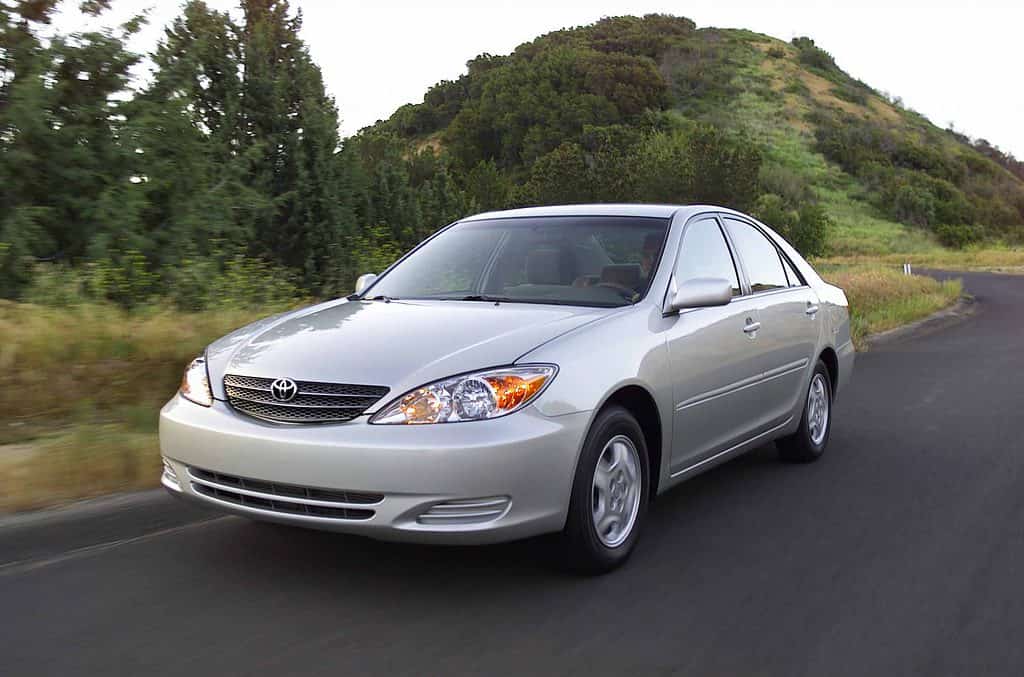
Toyota continued to improve the Camry, culminating in a redesign in the early 2000s. The fifth-generation model gave way to a new platform with a longer wheelbase and was taller than previous versions. With this came a higher seating position for the front seat occupants (driver and passenger) and more legroom for the back passengers.
Larger headlamps and taillights replaced the narrower ones of the past generation. And for the first time, the Toyota Camry was offered with an in-dash navigation system.
The Camry got a bigger 157-hp 2.4-liter four-cylinder base engine to go with the larger footprint. However, it retained the 3-liter V6, even though it was only available with an automatic transmission. That said, Toyota brought back the sporty SE trim, having left it out for the previous-gen Camry.
With so many changes for the sedan, it was only a matter of time before the coupe followed suit. Eventually, the Camry Solara (coupe and convertible) was updated for 2004 with a swanky new look. Toyota also added the Solara’s more powerful 3.3-liter V6 engine to the Camry SE trim.
Toyota Camry Sixth Generation (XV40): 2007–2011
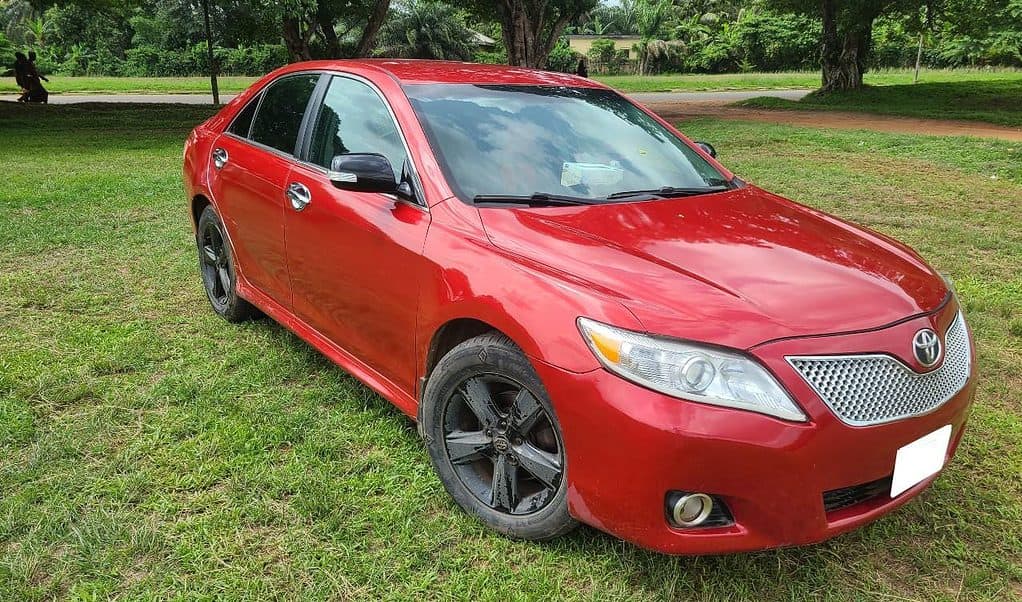
By 2007, Camry redesigns were pretty much a given, with each one bigger, better equipped, and more powerful than the last. The sixth-generation car was no different, keeping pace with updated rivals like the Ford Fusion and Honda Accord and quickly getting up to speed with a familiar market. It went on to sell over 473,000 units in its first year, a figure that is yet to be beaten by any other Camry year to date.
The base 158-hp 2.4-liter four-cylinder carried over for 2008 and 2009 but was replaced by the 169-hp (179 horsepower in the SE) 2.5-liter engine for 2010. On the other hand, the 3.3-liter V6 was replaced by an optional 3.5-liter engine with 268 horsepower right from 2008 — and it put the car out there as a speed champ.
Standard safety features included side-impact and seat curtain airbags. A traction control system became standard beginning with the 2010 model year, even though it was available as an option earlier. The 2010 Toyota Camry was also the first to have a USB port — one on the LE trim and two on all others. Bluetooth was also introduced in this generation.
The sixth-gen Camry saw the car get its first hybrid variant that could run on fuel and an electric motor, using Toyota’s proven Hybrid Synergy Drive system. It boasted 187 horsepower and promised 40 mpg city — although that has since been revised to 33 mpg. In 2009, the Camry Solara coupe and convertible were phased out.
Toyota Camry Seventh Generation (XV50): 2012–2017
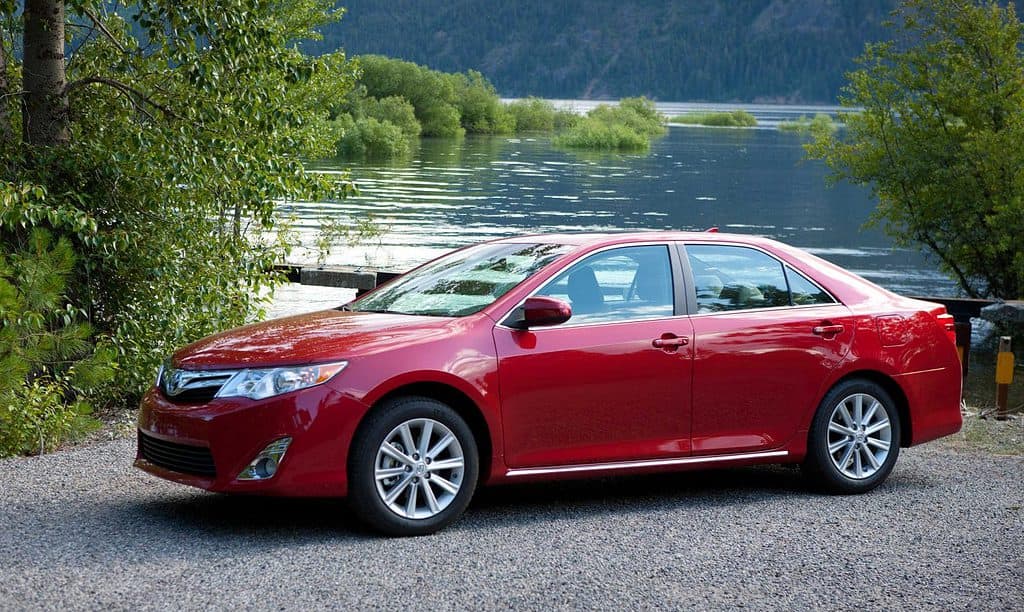
As usual, the Camry got a new styling in 2012, marking the start of the seventh generation. But it was uneventful for the most part. The new design was unexciting, and the powertrains (178-hp 2.5-liter four-cylinder and 268-hp 3.5-liter V6) were pretty much carryover — except for the hybrid drivetrain, which got some improvements.
The seventh Toyota Camry generation was the first to drop the manual gearbox entirely — all models came standard with an automatic transmission. The interior was slightly roomier and was one of the first Toyotas to feature the company’s Entune infotainment system with smartphone connectivity capabilities. Sales were good, but multiple criticisms and strong competition from the likes of the Ford Fusion, Hyundai Sonata, and Honda Accord — which were pushing the limits on interior amenities, refinement, and performance — saw Toyota take action to fix some things.
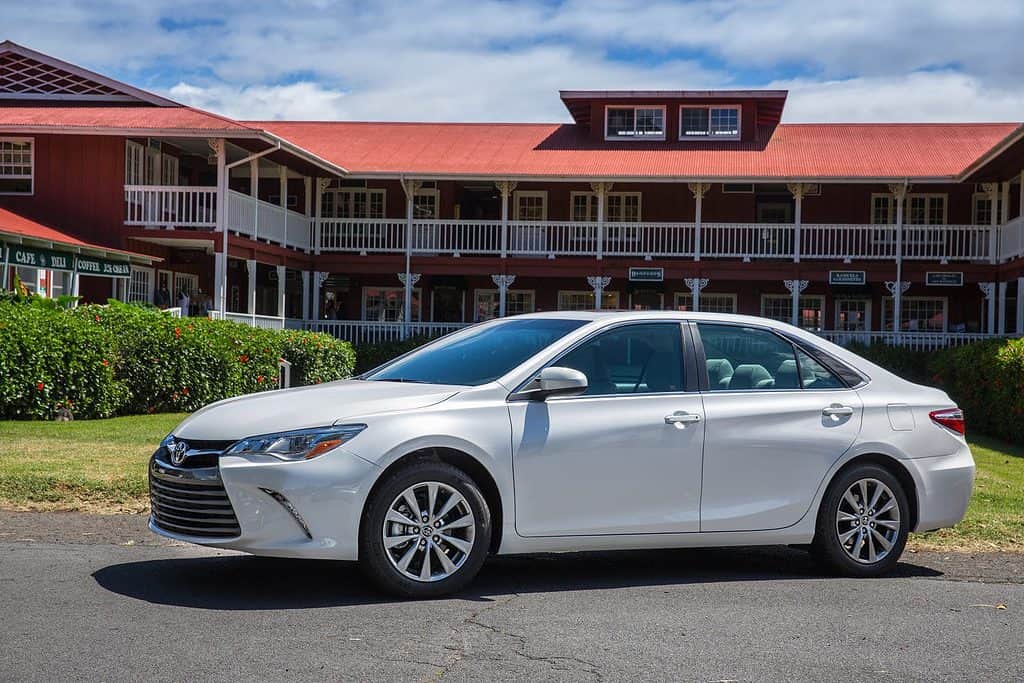
For the 2015 model year, Toyota made an emergency update to the Camry. This update was considerably more significant than a standard mid-cycle refresh (at least exteriorly), as the roof was the only untouched component. The new daring appearance, alongside the option of wireless smartphone charging, helped the Camry compete. The only downside was that the old engines were brought over once again, leaving the performance wanting — Toyota improved the fuel efficiency of this generation, though. That said, Toyota increased the sportiness of the popular SE trim level by adding an XSE model that amplified things ever so slightly.
For all the criticisms it received, the seventh-gen Camry has proven to be perhaps the most reliable generation to date per statistics and user reviews. Its model years have recorded some of the fewest NHTSA recalls, investigations, and complaints.
Toyota Camry Eighth Generation (XV70): 2018–Present
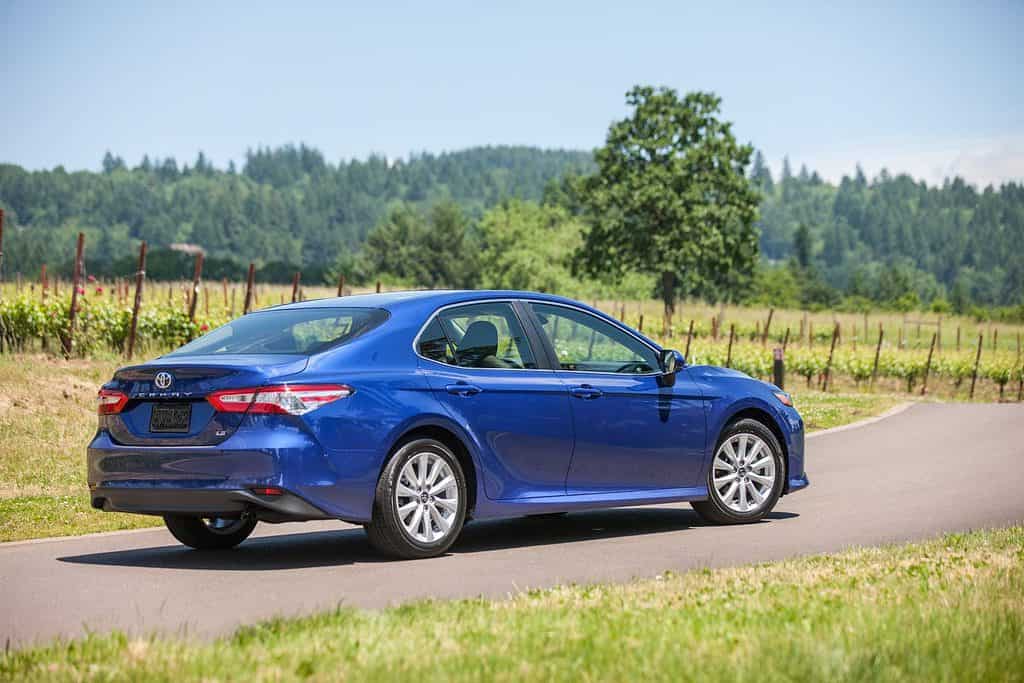
When the 2017 Detroit auto show rolled around, expectations for the Camry’s eighth generation were sky-high. For the first time in many years, the Camry changed platforms, with Toyota switching to its new TNGA component set. The redesign was perfectly timed to go head-to-head with an updated Honda Accord.
The eighth generation’s base trims come standard with a 2.5-liter four-cylinder engine that produces 203 horsepower and 184 lb-ft of torque. The 3.5-liter V6 is still available on certain XLE and XSE trims, making 301 horsepower and 276 lb.-ft. of torque. Both engine options are equipped with an eight-speed automatic transmission.
This generation is also known as the Toyota Camry Hybrid Generation, with hybrid powertrains available in the LE, SE, XSE, and XLE trims. The electric motor and four-cylinder engine are paired with a CVT automatic transmission and are capable of making 208 horsepower.
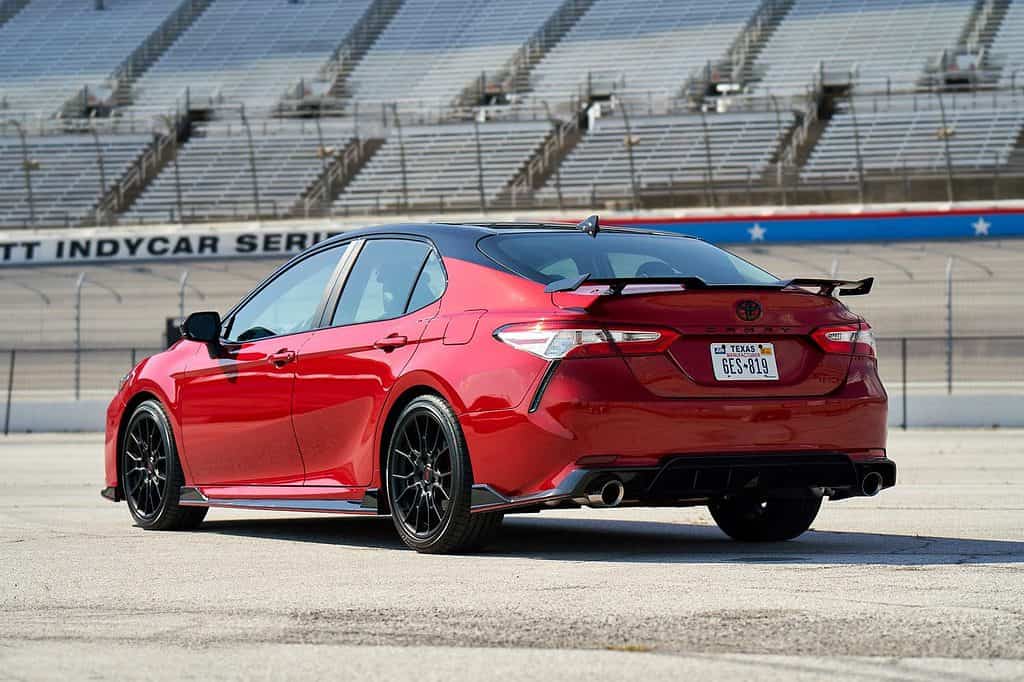
2020 saw Toyota debut a sporty Camry TRD (Toyota Racing Division) trim with an upgraded chassis, firmer suspension, and an exterior design (rear spoiler, unique 19-inch alloy wheels, larger brake rotors, etc.) that screams racing all the way. However, it has no power improvements, sticking to the same 301-hp 3.5-liter V6 as the XLE and XSE trims. That said, it was and remains the cheapest way to get the Camry with a V6 by a couple thousand dollars.
While the V6’s combined EPA rating of 26 MPG is no slouch, the Camry Hybrid with up to 52 MPG combined is the one to go for if fuel efficiency is what you’re after. Standard safety features on all trims include lane keep assist, automatic emergency braking, pedestrian detection, and adaptive cruise control. Since 2020, all Camry car trims have been equipped with three USB ports and Bluetooth, while higher-trim levels get additional features such as keyless entry.
The 2022 Toyota Camry is the latest model year. But the 2023 version should arrive in Fall this year — it’ll be interesting to see if it kickstarts the Camry’s next generation. After all, we’re already four years into the current eighth generation.
The Toyota Camry: Many Years and Over 10 Million Units Later
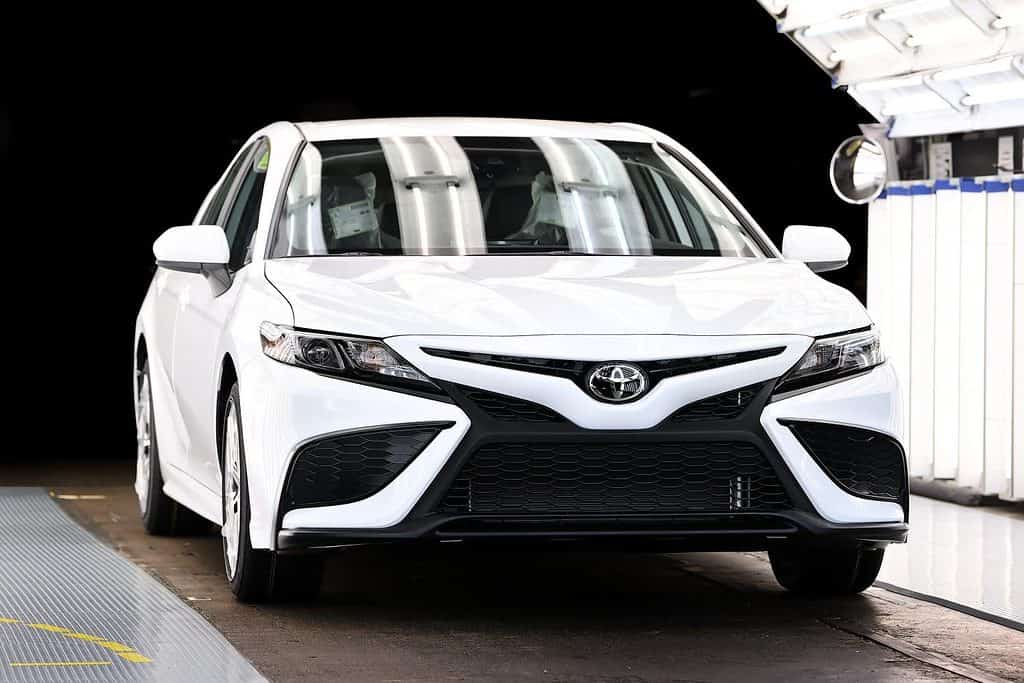
After eight Toyota Camry generations, the car has established itself as durable and reliable, winning multiple awards and topping sales charts along the way.
The result?
Toyota announced that it produced its 10 millionth Camry at its Kentucky plant in July 2021. (If curiosity is getting the better of you, the exact car is the white 2021 Camry SE pictured above.) That’s almost a year ago now, and the Camry’s sales are still going strong.

